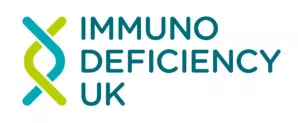Immunoglobulin is made from blood donations. Several thousand blood donations are pooled in the process. For these reasons there is always a possibility of catching an infection from one of the blood donors.
No one has ever caught HIV or hepatitis B from immunoglobulin therapy. In the 1990s, a small number of people caught hepatitis C from immunoglobulin. These days, blood donors are selected very carefully and the manufacturing process contains steps to remove viruses and bacteria.
There have been no cases of infection being spread from person to person by immunoglobulin since the 1990s.
There are two theoretical risks from immunoglobulin. The first is from prion infection. Prions cause BSE (mad cow disease) and variant CJD, mainly in the UK. Prions have been spread from person to person by blood transfusions but never by immunoglobulin.
The other risk is of new infections that start to affect humans, either because of global climate change or change in behaviour (e.g. feeding sheep to cows, in the case of BSE). One example of this is a virus that affected people in New York and entered the blood supply there.
It is very difficult to predict whether new infections, which could be spread by immunoglobulin, will appear in the future. However, the immunoglobulin manufacturers and immunologists around the world are constantly on the look out for any problems such as this.





